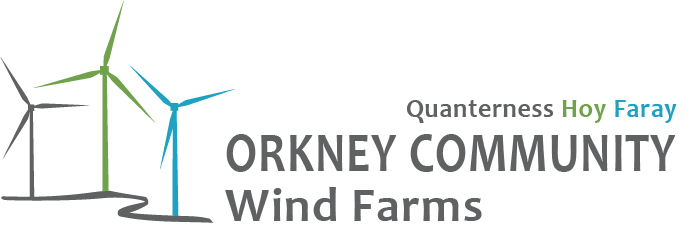About the Project
Orkney Islands Council are developing Orkney Community Wind Farms to harness Orkney’s natural resources, securing an interconnector for Orkney and bringing much-needed funds into the local economy.
Orkney Community Wind Farms consists of three developments – Quanterness in St Ola, Wee Fea in Hoy and Faray in the North Isles.
For some time, Orkney has not been able to take full advantage of our natural resources to produce renewable energy due to a lack of capacity on the existing cables. The projects have been critical in supporting the Needs Case for, and ultimately securing, a new interconnector for Orkney, which was approved by Ofgem in July 2023, with construction commencing in 2024.
Local Authorities across the UK are struggling to balance the books following COVID and recent geopolitical tensions increasing in recent years. OIC require new income streams to be able to continue to provide the high level of services we offer to the community. These wind farms will provide a steady stream of income for the Council and reduce the reliance on the Strategic Reserve Fund.
The projects will also contribute to our Net Zero aspirations. You can read more about the benefits of the projects here: Benefits – Orkney Community Wind Farms
You can find the project timeline here: Timeline – Orkney Community Wind Farms
Planning and Development
These sites were identified following a mapping exercise undertaken by the Council, which applied a 700m buffer zone around homes, as well as marking out Special Areas of Conservation, Special Protection Areas and Special Areas of Scientific Interest. This exercise found that there are limited options for wind farm development sites in Orkney and that many of the feasible sites were already being developed by private companies. Hoy, Faray and Quanterness were three sites that offered the best potential for development.
All three developments are substantial and will feature six turbines, which stand at 149 metres from base to blade tip, at each site. The turbine locations and dimensions have been carefully designed to manage all environmental impacts while maintaining a viable scale of development that can deliver benefit to the Islands. Collectively, the windfarms are predicted to produce nearly 86.4MW per year.
Yes. Planning permission for Hoy and Quanterness was granted in December 2021, and for Faray in December 2022.
The project will be 100% owned by the Council. This means all of the profits will remain in Orkney, directly benefiting our communities by preserving and enhancing existing services in the county. In the operation phase, an external asset management team will manage the day to day running of the wind farm. In addition, a full service turbine maintenance contract will be in place for the 25-year lifetime of the project.
Financial Information
The Council’s Strategic Reserve Fund has been used to fund the development of the projects. For the avoidance of doubt, this means that no council services have been impacted by the development of the windfarms. If the projects are approved, the entire cost of construction will be funded through a bank loan with the ability to fix the interest rate at various drawdown points.
Financial assessments during the development stage indicated that the combined average annual real profit for all three projects, once all operational costs and loan repayments have been made, was in the region of £5.5m in today’s money. The only project which Council is minded to proceed with at present is Quanterness. That project alone is predicted to make £3.3m average annual real profit. This is equivalent to a total of £82m profit over the 25 years excluding inflation, and £119m including inflation.
The Council are able to accurately calculate the profitability of the Quanterness and Hoy projects because both projects were awarded a Contract for Difference (CfD) in 2022. The financial model includes contingency costs to address uncertainties or unforeseen challenges during construction, installation and operation.
The Contract for Difference (CfD) scheme is the government’s main mechanism supporting the deployment of low-carbon electricity generation – providing a guaranteed price for the electricity generated for a 15-year period. A bid for a CfD for the Faray project will be made closer to its scheduled grid connection date.
Unfortunately not. The heavy regulation and separation of the generation and supply industries result in an extremely complex market – one in which a direct link between high renewable energy generation in a certain area and cheaper energy bills does not exist.
Community and Environmental Benefits
We expect carbon savings of roughly 43,400 tonnes per year per site – this totals 130,000 tonnes of CO2 every year. This figure takes into account the carbon payback period (how long it will take the wind farms to offset the greenhouse gasses emitted as a result of its construction).
At consultation events held in 2023, attendees were asked to fill in a short questionnaire to give their views on the project. Of those who completed the survey, 72% were in support of the project, 20% were undecided, and 8% did not support the project. You can read more about the community engagements here: Community Engagement – Orkney Community Wind Farms
A location specific Community Benefit Fund will enable local communities to fund their own projects and schemes – however best suits their needs. You can read more about the community benefit fund here: Community Benefits – Orkney Community Wind Farms
